Building Ventilation
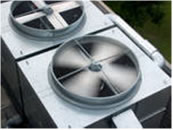 Building ventilation is the circulation of air throughout a building. The ventilation or the heating, ventilating, and air-conditioning (HVAC) system of a building supplies and removes air either naturally (windows) and/or mechanically to and from a space. HVAC systems consist of mechanical parts which should provide air to building occupants at a comfortable temperature and humidity that is free of harmful concentrations of air pollutants. Building ventilation may be an important factor determining the relationship between airborne transmission of respiratory infections and the health and productivity of workers. Building ventilation is the circulation of air throughout a building. The ventilation or the heating, ventilating, and air-conditioning (HVAC) system of a building supplies and removes air either naturally (windows) and/or mechanically to and from a space. HVAC systems consist of mechanical parts which should provide air to building occupants at a comfortable temperature and humidity that is free of harmful concentrations of air pollutants. Building ventilation may be an important factor determining the relationship between airborne transmission of respiratory infections and the health and productivity of workers.
Why is the operation and maintenance of HVAC systems important?
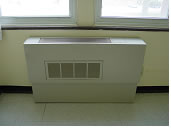 Improper operation and maintenance of HVAC systems is one of the most common problems that impact workplace indoor environmental quality (IEQ). HVAC systems include all of the equipment used to ventilate, heat, and cool the building; to move the air around the building (ductwork); and to filter and clean the air. These systems can have a significant impact on how pollutants are distributed and removed. Maintaining good IEQ requires constant attention to the building's HVAC system, which includes the design, layout and pollutant source management or air filtration. Improper operation and maintenance of HVAC systems is one of the most common problems that impact workplace indoor environmental quality (IEQ). HVAC systems include all of the equipment used to ventilate, heat, and cool the building; to move the air around the building (ductwork); and to filter and clean the air. These systems can have a significant impact on how pollutants are distributed and removed. Maintaining good IEQ requires constant attention to the building's HVAC system, which includes the design, layout and pollutant source management or air filtration.
There are a variety of pollutants and sources of pollutants in a building such as:
- carbon dioxide (CO2)
- tobacco smoke
- molds and bacteria
- cleaning products
- copy machines
- pesticides
- vehicle exhaust
HVAC systems alone can act as sources of pollutants. If not appropriately maintained, ventilation air filters can become contaminated with dirt and/or moisture. Microbial growth results from stagnant water in drain pans or from uncontrolled moisture inside of air ducts and cooling coils.
HVAC management for better IEQ
Ventilation System Design
The amount of air required to be delivered to a given space by an HVAC system is based primarily on the number of people occupying the space, the type and amount of equipment, and the overall size of the space. Proper distribution of ventilation air throughout all occupied spaces is essential. When areas in a building are used differently than their original purpose, the HVAC system may require modification to accommodate these changes. For example, if a storage area is converted into space occupied by people, the HVAC system may require alteration (balancing) to deliver enough conditioned air to the space.
Outdoor Air Supply
Adequate supply of outdoor air, typically delivered through the HVAC system, is necessary in any office environment to dilute pollutants that are released by equipment, building materials, furnishings, products, and people. Carbon dioxide (CO2), a normal constituent of exhaled breath, is an indicator of whether sufficient quantities of outdoor air are being introduced to an occupied space for acceptable odor control. The American Society of Heating, Refrigerating and Air-Conditioning Engineers, Inc. (ASHRAE) develops consensus standards and guidelines for HVAC systems. ASHRAE notes in an informative appendix to standard ANSI/ASHRAE 62.1-2007: Ventilation for Acceptable Indoor Air Quality that indoor CO2 concentrations no greater than 700 ppm above outdoor CO2 concentrations will satisfy a substantial majority (about 80%) of visitors with regard to odor from sedentary building occupants (body odor) [ANSI/ASHRAE 2007]. This would typically correspond to indoor concentrations below 1050 ppm since outdoor CO2 concentrations usually range between 300 to 350 ppm. However, CO2 is not an effective indicator of ventilation adequacy if the ventilated area is not occupied at its usual occupant density at the time the CO2 is measured. Elevated CO2 concentrations suggest that other indoor contaminants may also be increased. If CO2 concentrations are elevated, the amount of outdoor air introduced into the ventilated space may need to be increased.
ASHRAE guidelines provide specific details on ventilation for acceptable IEQ. A ventilation system expert can help meet ASHRAE ventilation guidelines in the building. ANSI/ASHRAE 62.1-2007 recommends outdoor air supply rates that take into account people-related sources as well as building-related sources. For office spaces, conference rooms, and reception areas, 5 cubic feet per minute of outside air per person (cfm/person) is recommended for people-related sources, and an additional 0.06 cfm for every square foot (cfm/ft2) of occupied space is recommended to account for building-related sources. In elementary and high school classrooms, 10 cfm/person plus 0.12 cfm/ft2 of outdoor air is suggested. To find rates for other indoor spaces, refer to Table 6-1 also found in ANSI/ASHRAE 62.1-2007.
Past research has shown that the lack of adequate outdoor air supplied into buildings contributes to occupant health symptoms. Buildings with ventilation systems designed to supply outdoor air only when indoor temperatures require adjustment may experience an increase in sick leave among employees.
Outdoor Air Quality
When present, outdoor air pollutants such as carbon monoxide, pollen, and dust may affect indoor conditions when outdoor air is taken into the building's ventilation system. It is important to properly install and maintain HVAC system filters, which can trap many particles. Controlling gaseous or chemical pollutants may require more specialized filtration equipment and sometimes relocation of the outdoor air intakes.
Equipment Maintenance
Diligent maintenance of HVAC system equipment is essential for the adequate delivery and quality of building air. All well-run buildings have preventive maintenance programs that help ensure the proper functioning of HVAC systems.
Main building units in need of cleaning, maintenance or repair:
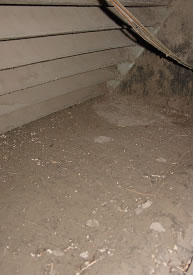 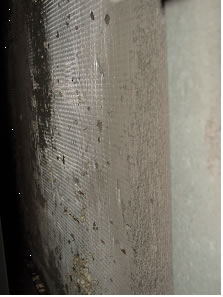
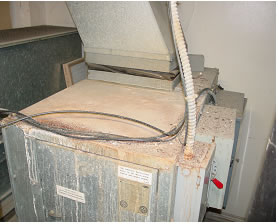
Improperly sized filter stuffed into a unit:

What workers can do
When workers suspect their health problems are caused by poor ventilation in their work areas, workers should:
- Report concerns immediately to supervisors or those persons responsible for building maintenance.
- See their doctor for proper diagnosis and treatment.
What management and building owners can do
To prevent health problems associated with poor ventilation in the workplace, owners and managers should:
Respond to building-related health concerns of workers.
It is important that clear procedures for recording and responding to IEQ complaints be established to ensure an adequate and timely response. These include:
- Logging all complaints or problem reports
- Collecting information about each complaint
- Ensuring confidentiality
- Determining a plan for response
- Identifying appropriate resources for response
- Applying remedial action
- Providing frequent feedback to building occupants regarding the complaint and response actions
- Follow-up to ensure that remedial action has been effective
- Regularly clean or replace HVAC system filters.
Use the most efficient filters possible while still maintaining the ability to supply adequate air flow to the spaces. Ensure that filters are installed in the correct orientation relative to airflow, that they are the appropriate size, and that they are seated in the filter rack properly. Take precautions to minimize air flowing around the filters instead of through them.
- Regularly inspect outdoor air intakes.
Open all outdoor air intakes that are closed. Adjust or repair those that are not working properly. Regardless of the air flow required for heating and cooling, the minimum outdoor air flow recommended by ASHRAE should always be provided to each space.
- Regularly inspect office building exhaust fans to make sure all are working properly.
Dysfunctional exhaust fans can result in suboptimal pressure differences throughout the building and can create or exacerbate IEQ problems.
- Use less conservative cycle times for the HVAC system.
Start the HVAC system earlier in the morning before workers arrive to reduce temperature fluctuations and control humidity levels. Simply providing a more thermally- comfortable working environment may reduce the number of IEQ complaints.
- Never store paints, cleaners, or other chemicals in HVAC equipment rooms.
Odors and potentially harmful vapor contaminants can easily be circulated throughout the entire space being supplied by an HVAC system.
HVAC checklists to assist with maintenance and record keeping from USEPA/NIOSH Building Air Quality: A Guide for Building Owners and Facility Managers:
HVAC Checklist - Long Form  (39KB; 15 pages) (39KB; 15 pages)
HVAC Checklist - Short Form  (20KB; 4 pages) (20KB; 4 pages)
Resources
American National Standards Institute (ANSI)/American Society of Heating, Refrigerating and Air-Conditioning Engineers (ASHRAE). For information on heating, ventilating, or air-conditioning systems and IEQ, call 1-800-527-4723.
External link: http://www.ashrae.org/
Sheet Metal and Air Conditioning Contractors’ National Association, Inc. (SMACNA)
External link: http://www.smacna.org/
Environmental Protection Agency -Ventilation and Air Quality in Offices
Externeral link: http://www.epa.gov/
Occupational Safety and Health Administration (OSHA)
External link: http://www.osha.gov/
Lawrence Berkeley National Laboratory
External link: http://eetd.lbl.gov/ied/sfrb/vent-summary.html
|

